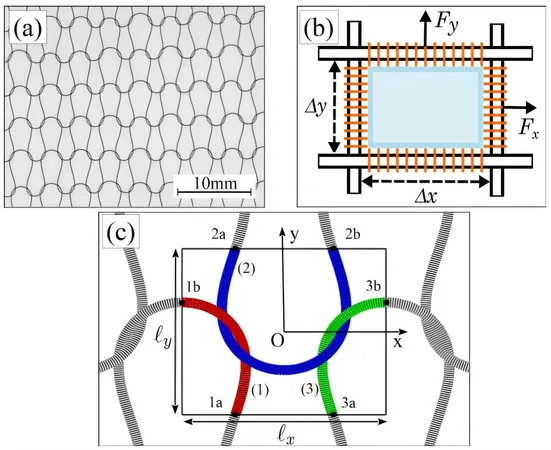
Unraveling the Secret of Your Cozy Christmas Sweater: How Friction Defines Knitted Textiles!
2024-12-30
Author: Jacob
The Science Behind Knitted Garments
Ever wondered why your favorite knitted Christmas sweater hugs you just right? A groundbreaking study conducted by physicists from the University of Rennes, Aoyama Gakuin University, and the University of Lyon reveals the hidden science behind the cozy form of your knitted garments. The findings, published in the prestigious Physical Review Letters, suggest that friction between the fibers plays a crucial role in the unique shapes of knitted fabrics.
Previous Research and Findings
While researchers have previously explored aspects related to the warmth of knitted garments, such as how they insulate despite having gaps between stitches, little attention has been given to how these fabrics can achieve various forms. This research aims to fill that gap!
Details of the Study
The brilliant minds behind the study—Jérôme Crassous, Samuel Poincloux, and Audrey Steinberger—conducted experiments using nylon yarn and a classic Jersey knit stitch known as stockinette, where interlocked loops are formed with knitting needles. They knitted a sample of fabric consisting of 70x70 stitches and subjected it to a biaxial tensile machine, which allowed them to stretch the fabric in multiple directions.
Metastable Shapes
Surprisingly, the results showed that the garment did not settle into a single, defined shape. Instead, by manipulating the way the fabric was stretched, they discovered a phenomenon they termed "metastable shapes." Each stretch resulted in a different resting form, demonstrating the fabric's ability to adopt a variety of stable configurations.
Impact of Yarn Twisting
The researchers noted a fascinating correlation: the proportions of these metastable shapes shifted based on the amount of twisting applied to the yarn. This indicated that knitted fabrics possess immense flexibility in shape, depending on the conditions they encounter.
Computer Simulations
To further analyze these findings, the team developed computer simulations of the fiber behavior during the experiments. This provided them the opportunity to manipulate factors that are difficult to control in real-world fabrics, like friction between strands. They made a startling discovery—when they set the friction to zero, the fabric could only maintain a single shape. This pivotal finding underscored the importance of friction as the driving force influencing the diverse forms that knitted textiles can achieve.
Conclusion
So, the next time you snuggle up in your beloved Christmas sweater, remember the intricate science at play—the interplay of fibers, tension, and friction that crafts not just a garment, but a multitude of unique shapes! Whether you're dressing up for a festive gathering or lounging at home, there's more to those stitches than meets the eye. This research not only adds depth to the appreciation of knitted fabrics but also opens avenues for innovation in textile design—who knows what warm, stylish surprises are next to come?



 Brasil (PT)
Brasil (PT)
 Canada (EN)
Canada (EN)
 Chile (ES)
Chile (ES)
 Česko (CS)
Česko (CS)
 대한민국 (KO)
대한민국 (KO)
 España (ES)
España (ES)
 France (FR)
France (FR)
 Hong Kong (EN)
Hong Kong (EN)
 Italia (IT)
Italia (IT)
 日本 (JA)
日本 (JA)
 Magyarország (HU)
Magyarország (HU)
 Norge (NO)
Norge (NO)
 Polska (PL)
Polska (PL)
 Schweiz (DE)
Schweiz (DE)
 Singapore (EN)
Singapore (EN)
 Sverige (SV)
Sverige (SV)
 Suomi (FI)
Suomi (FI)
 Türkiye (TR)
Türkiye (TR)
 الإمارات العربية المتحدة (AR)
الإمارات العربية المتحدة (AR)